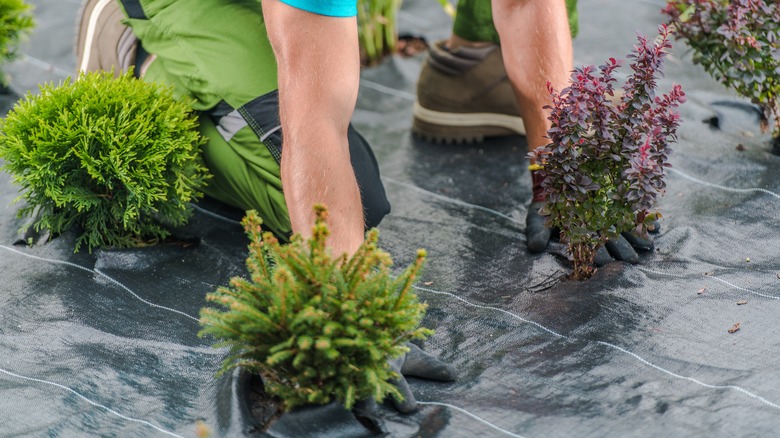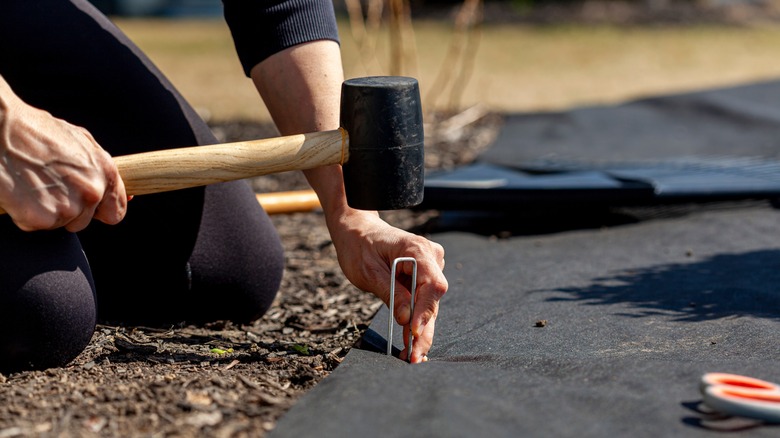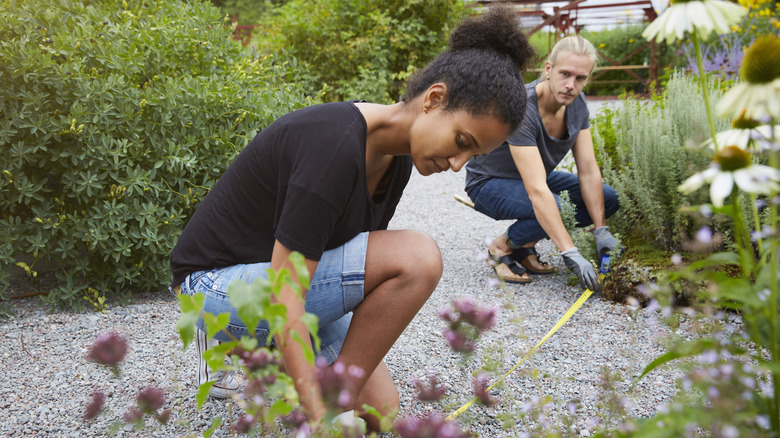Why Your Weed Fabric Isn't Working (& The Simple Fix You Need)
Imagine stepping into your garden ready to conquer your most persistent enemy: weeds. Previously, you've likely armed yourself with trusty mulch and mastered the art of hand pulling, yet those pesky intruders remain. Enter landscape fabric — what you hope to be your saving grace in weed suppression. But if you've been disappointed by its results, the problem might not be the fabric itself, but the modest staples securing it. The secret to getting your landscape fabric to keep weeds at bay lies in not only using the right landscape staples, but applying the correct quantity of them to keep the fabric in place.
Selecting the right type of landscape staples starts by knowing the space that you're working with. Specifically, you'll need to pay attention to the texture of the soil. Based on this, you can determine the length of the landscape staple you'll need. It's also critical to be aware of the different staple shapes; that way, you can get the best fit and avoid getting the incorrect kind. Finally, to determine the amount of staples to use, keep a measuring tape handy so you can calculate the dimensions of the land.
How to choose the right landscape staples
When it comes to selecting the right type of landscape staples, start by analyzing your soil. If you don't know the texture of your soil, you can find out by using a simple glass jar soil test. For soil that is loose or sandy, longer staples will work best, while shorter ones are better for clay soil. Generally though, staples that are at least 6 inches long are ideal for securing weed fabric. The longer the legs of the staple, the deeper they go and the stronger they are to lock in the fabric.
Then, you need to consider which shape of staple is appropriate for weed fabric. Common staple shapes include square-top, round-top, U, and J. Knowing the different shapes and which one is suitable for you can make a major difference in the efficacy of your fabric.
Square-top staples are meant to secure weed barriers and landscape fabric. However, they may be confused with round-top staples that are typically used to secure PVC pipes. When given the choice between the two, select a square-top staple. Meanwhile, U-shaped staples are helpful in sloped areas and are great around trees and shrubs. J-shaped staples can have a stronger grip than U-shaped ones, but are better suited for flat or slightly sloped surfaces. Since square-top staples have a larger surface area, however, this gives them superior coverage compared to the other options.
Use enough staples to secure your fabric
Using enough staples to secure your landscape fabric is crucial to keep weeds out. Gaps within the cloth allow weeds to cram their way through. An easy fix for this is to add more staples where the fabric is loose. Ideally, you want each end of your fabric to be tightly locked into the soil. This will prevent it from moving and allowing weeds to pop up.
To get the most accurate estimate for how many staples you should use, pull out a measuring tape to determine the surface area of the location your fabric will cover. Every 1 foot of fabric along the perimeter and center should include a garden staple. Plan to use four staples for every plant you insert, plus extra staples for fabric that overlaps. For each plant, the staples secure the flaps of cloth that are cut to insert the base of the plant into the soil.
Of course, weed fabric isn't a perfect solution to preventing weeds and it has its downsides worth noting. First, the fabric blocks key resources, like water and air, from your plants' roots. Second, over time, weeds can find their way back into the soil. Lastly, the material wears down or is torn through as you tend to your plants. Fortunately, you can always try these natural DIY weed barrier alternatives if weed fabric doesn't make sense for you.


